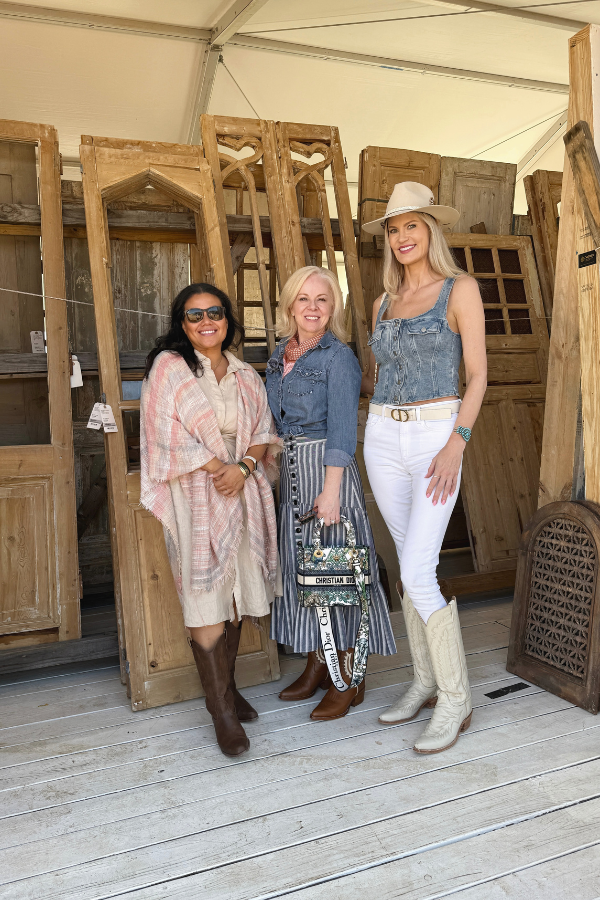
What Can I Expect From an Interior Design Intern? Do I Have to Pay Them?
Summary
An intern can support your studio in meaningful ways—samples, research, presentation prep, organization, light drafting—but they still need structure, guidance, and real compensation. Paying interns sets the tone for your culture and shapes who can access the field. Clarity, mentorship, and exposure matter more than perfection. When you treat interns as emerging professionals instead of free labor, you build a stronger pipeline of talent and a studio people want to learn from.
Reflection Questions
When I picture an intern in my studio, am I expecting help or substitution—and does that expectation match what an intern can realistically offer?
What does paying interns signal about my values, both to the people who work for me and to the students who may one day want to?
Do I have a clear workflow and point person in place, or am I hoping an intern will “figure it out” for me?
Journal Prompt
Describe what a healthy internship experience looks like inside your studio from the intern’s perspective. Where do they sit? Who do they talk to? What do they see, learn, and contribute during a typical week? Once you’ve written that out, note what would need to shift—processes, expectations, communication—for that vision to feel real instead of aspirational.
The first time you consider bringing an intern into your studio, it’s usually because you’ve hit that wall where the work simply outweighs your capacity. You’re still drafting, still answering every email yourself, still spending late afternoons reorganizing the sample library because no one else is around to do it. You start thinking that an extra set of eyes or a fresh injection of energy might ease the pressure. But you have so many questions about hiring an interior design intern! What can they realistically do? How much oversight will they need? And the one that most firm owners whisper and wink to each other instead of asking outright: Do I actually have to pay them?
There’s no shortage of opinions, especially online. Some studio owners swear interns are a lifesaver from day one. Others admit the first round felt more like babysitting, or (worse case scenario) emergency triage. Most experiences with interns lie somewhere in the middle. Interns are not junior designers. They’re not free labor. They’re students (or very new grads) learning how a design business actually works beyond the classroom. What you can expect depends on what you’re willing to teach, how clearly you define their role, and the values your studio holds dear.
Why Paying Interns Should Be the Baseline
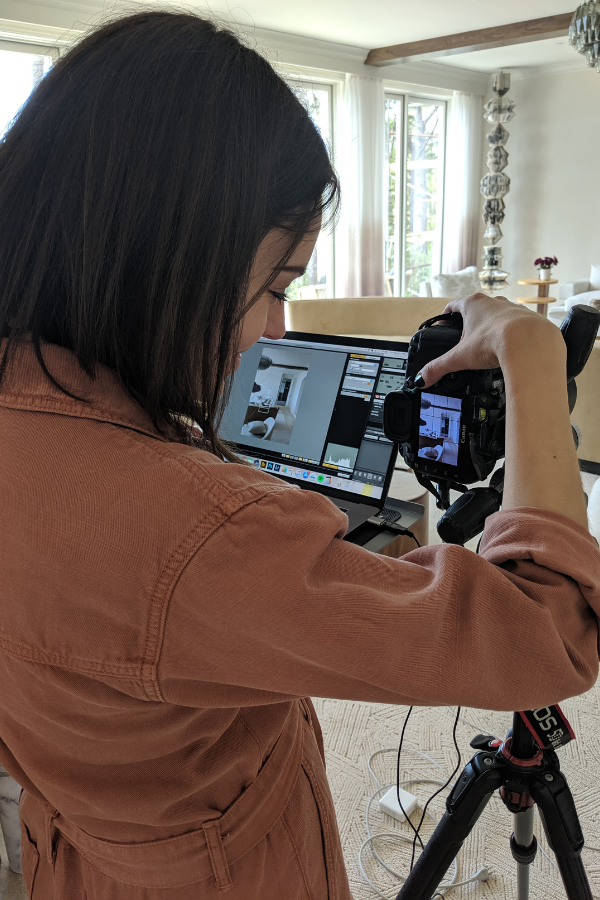
A lot of new firm owners and young studios query whether paying interns is truly necessary. But we argue that it is, especially if you want a diverse, multi-talented team. When Laura Umansky talks about her stance on internships, she doesn’t hedge.
“At our firm, we always pay interns,” she told us. “It’s a core belief. Internships should be an opportunity for them to grow and a way for us to support the industry by developing new creative talent.”
She’s seen what happens when internships are treated as optional, or worse, as a way to offload the least desirable tasks without compensation. It signals something subtle but significant: the studio values the output, not the person. And that mentality tends to seep into everything a business does.
“A strong intern brings curiosity, initiative, and willingness to help. They support research, samples, vendor communication, studio organization, presentation prep, drafting if they have the skills. But the real purpose is exposure — helping them understand what a professional design studio looks and feels like.”
Paying them is part of creating that environment. It says the studio sees them not as a favor or a convenience but as an emerging professional. And, frankly, it means you get better applicants.
But the Industry Isn’t Unified — Yet

You don’t have to look far to see how uneven the landscape is. A quick search on Business of Home’s job board pulls up listings like this one recently posted by a well-known and respected West Hollywood studio. The position is a Studio Intern. Unpaid. Academic credit only.
The listing itself is detailed, thoughtful, and educational. It outlines responsibilities like library maintenance, sample coordination, vendor research, errands, exposure to high-end hospitality work. It notes what the intern will gain: mentorship, access to vendors, insight into a fast-paced luxury practice. It’s exactly the kind of experience a design student would want.
Except it’s unpaid.
This isn’t unique to that firm. Many high-profile studios still follow that model. Historically, design education programs encouraged it because credit-based internships were considered part of the academic structure. But the industry is shifting, slowly, toward acknowledging that unpaid work limits who can enter the field.
You can appreciate the rigor and professionalism of that listing while also recognizing the inequity it could reflect. Both things can be true. And both facts help firm owners understand the decisions they’re making about their own programs.
What You Can Realistically Expect From an Intern
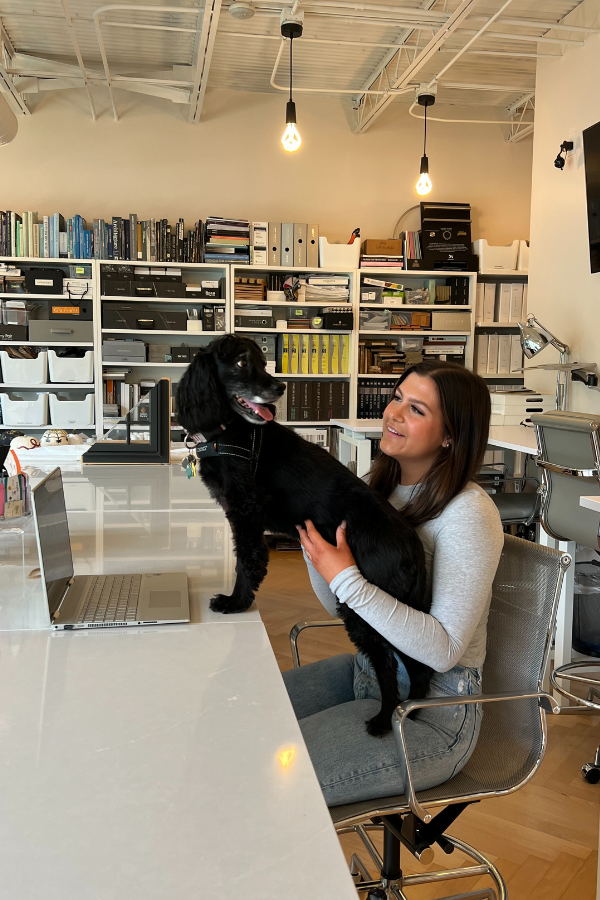
Interns show up from day one with enthusiasm, education, and varying degrees of practical ability. They usually come in with just enough knowledge to be either effective or dangerous: they know the software, they know the vocabulary, but they don’t yet know how a Tuesday morning at a design firm actually functions. Who does what, when, why, and with whom.
This is why setting expectations protects everyone.
An intern can…
- help manage samples
- organize the library
- prepare presentation boards
- sit in on client meetings (as an observer, not a participant)
- pull inspiration imagery
- draft simple details
- communicate with vendors on straightforward requests
- keep the studio running in small but meaningful ways
But here’s the issue: you’ll spend time training them. You’ll repeat yourself. You’ll realize you forgot to mention things you thought were obvious. You’ll have days when you think, “It would’ve been faster if I’d done it myself.” Every designer has had that experience.
But if you train the right person, that effort and time will pay off.
When an intern understands how your firm works (i.e., which vendors you prefer, how samples are handled, what your presentation boards typically look like), the support they provide is significant. Some interns eventually turn into junior designers. Others simply make this difficult season more manageable. Laura frames it this way:
“A strong intern brings curiosity, initiative, and willingness to help.”
That trio matters more than skill. A curious intern learns fast. An eager intern asks before they act. An intern willing to help will step into the unglamorous tasks most designers don’t have time for anymore.
The Purpose Is Exposure, Not Substitution
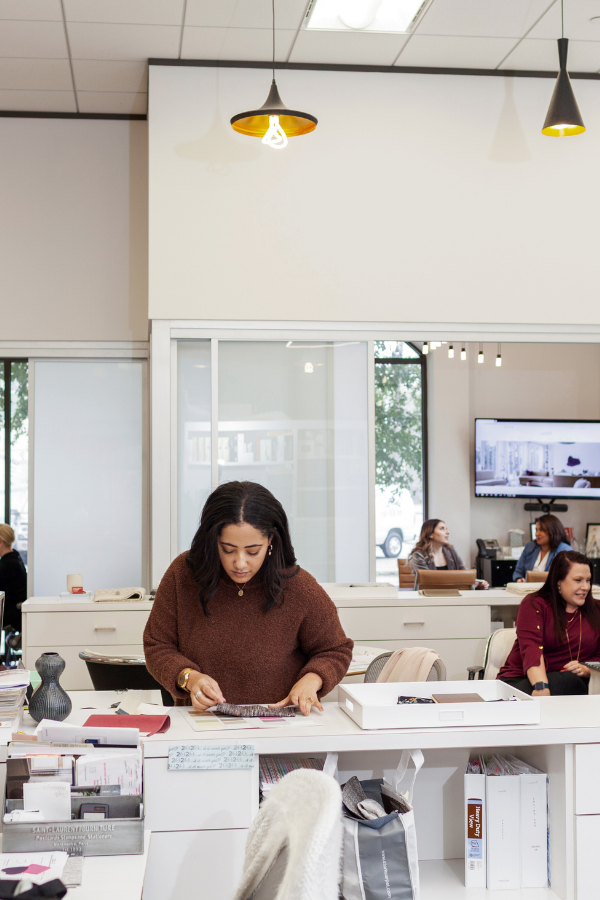
Many firm owners (especially small ones) secretly hope an intern will operate like an extra pair of hands without needing much in return. But the purpose of an internship isn’t to replace a billable employee. The purpose is to help someone understand what the profession looks like at ground level.
Interns learn…
- the pace of a real studio
- what a client presentation requires
- how vendors interact with designers
- why samples matter
- how project information is tracked, shared, and stored
- what designers wish schools taught
These are things you can’t absorb exclusively from software classes or design theory, though both matter. You learn by watching how a team functions throughout the day.
That means the studio needs to give them access, context, and feedback. Not constant hand-holding, but intentional guidance. If you treat an intern like a junior designer, you’ll resent the mismatch. If you treat them like an observer who’s also capable of real tasks, you get a stronger learning environment and better work from them.
Where Great Interns Come From

Laura explained that…
“The best interns typically come through design programs, referrals, and professors who know exactly which students are truly ready for hands-on experience.”
This aligns with what many studio owners quietly admit. Schools know their students. They see who collaborates well, who drafts cleanly, who shows up prepared, who actually listens. When a professor vouches for someone, that recommendation usually carries a lot of weight. But it’s not the only route.
Interns also come from…
- students who follow your studio on social
- local design organizations
- industry events
- young designers who have been working retail and want to move toward studio work
- portfolio submissions from people who have researched your aesthetic
What matters is intention. The interns who thrive aren’t necessarily the ones with the best background or the prettiest mood board. They’re the ones who show they care about learning the business behind that beauty. Both a design eye and a business mind are often needed to be a successful designer, procurement agent, or other firm employee.
How To Prepare Before Bringing Someone In

Studio owners often underestimate how much clarity is required before the intern arrives. You don’t need a 20-page manual, but you do need to know…
- who they report to
- how often you’ll check in
- what projects they can touch
- what meetings they can attend
- how you’ll evaluate their performance
- what hours are realistic for both sides
If you’re a newer firm, you might still be solidifying some of this for yourself. That’s normal. You can still create a simple structure.
Remember that West Hollywood listing? Whatever your feelings about unpaid internships, the posting is a model of specificity. It spells out responsibilities, qualifications, transportation expectations, even the kind of projects they’ll be exposed to. Students appreciate clarity. So do studios.
If you run a paid program, clarity matters even more. People show stronger commitment when they know what the job actually is.
The Line Between “Learning” and “Labor”
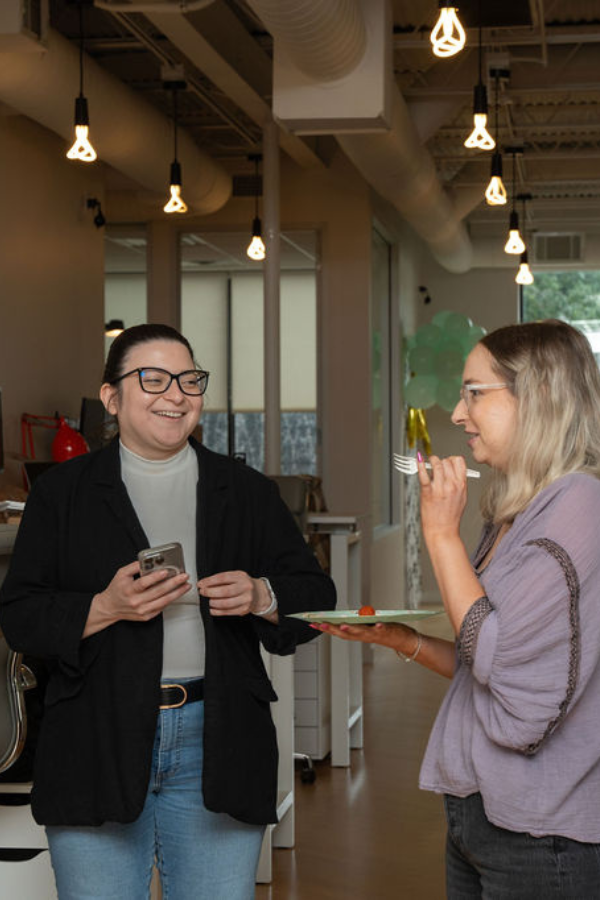
You might argue that because you are teaching and training your intern that they do not need financial compensation. After all, they pay for college, right? No.
If an intern contributes work that your studio depends on, if they organize the library in a way that saves designers hours, if they handle samples that would otherwise fall on a junior staff member, if they prep presentations that clients see… that is labor. And labor deserves real compensation.
Fuel your creative fire & be a part of a supportive community that values how you love to live.
subscribe to our newsletter
*please check your Spam folder for the latest DesignDash Magazine issue immediately after subscription

If the internship is primarily observational (think shadowing, note-taking, exposure), there might be a bit more nuance. Some owners argue that academic credit offsets the cost. Others believe unpaid internships inadvertently perpetuate inequity by limiting participation to students who can afford to work without compensation.
Laura is unambiguous in her perspective. “We always pay interns.” Her stance reflects a long-term view: the industry only gets stronger when emerging designers feel supported, not extracted from.
Giving Interns Access Without Overextending Yourself
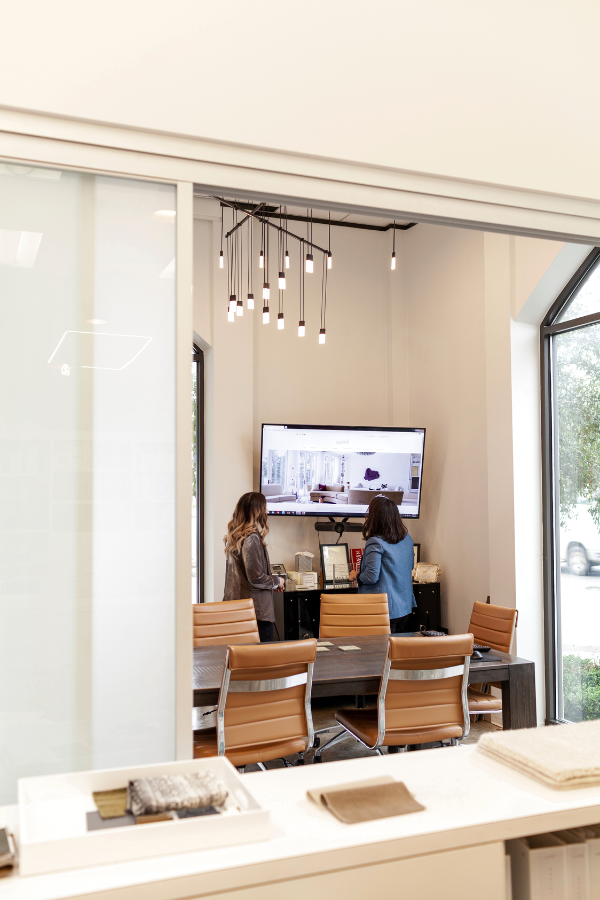
You don’t have to let an intern into every meeting. You don’t have to review every benchmark of their school project. You’re not a professor; you’re a firm owner with paying clients.
But you can give them a real window into how the business works.
Let them observe design reviews.
Let them see how you communicate with vendors.
Let them watch a client presentation being prepped, even if they don’t attend the meeting itself.
Let them understand how budgets are built, even at a high level.
Most interns have never seen the business side of design. They think the job is creative concepting, when it’s also scheduling, ordering, delays, damages, contractors, accounting, and documentation. Exposure to that reality is a gift.

What Interns Give Back to Your Studio
Interns shift the atmosphere of a studio. They bring energy. They ask questions that make you rethink your defaults. They remind senior designers that some things were once confusing, which could improve ongoing client communication. They help the studio pay attention to its own processes.
A firm that mentors well tends to attract stronger talent later. Word spreads quickly through design programs. Students want to intern where interns are respected. Junior designers want to apply to firms that treat young professionals with care. Even clients notice. A studio that values people at every stage feels like a studio with values. Everyone loves that.
In the End, It’s a Reflection of Your Firm Culture

Bringing in an intern is not just about getting a lifeline when your energy and time have simply run out. It’s a LOT more about identity. Studios that treat interns with intention (clarity, structure, mentorship, and actual pay) tend to handle everything else with intention too. This will become a pattern. And patterns matter.
You don’t have to make your internship program perfect. It just has to reflect the studio you want to run. The industry is watching itself shift on this topic. Students are watching, too. And talent gravitates toward the firms that treat them like the future, not like free labor.
If you pay attention to that, you’ll find the right intern. And, maybe more importantly, you’ll become the kind of studio they feel proud to learn from and clients feel proud to work with.










